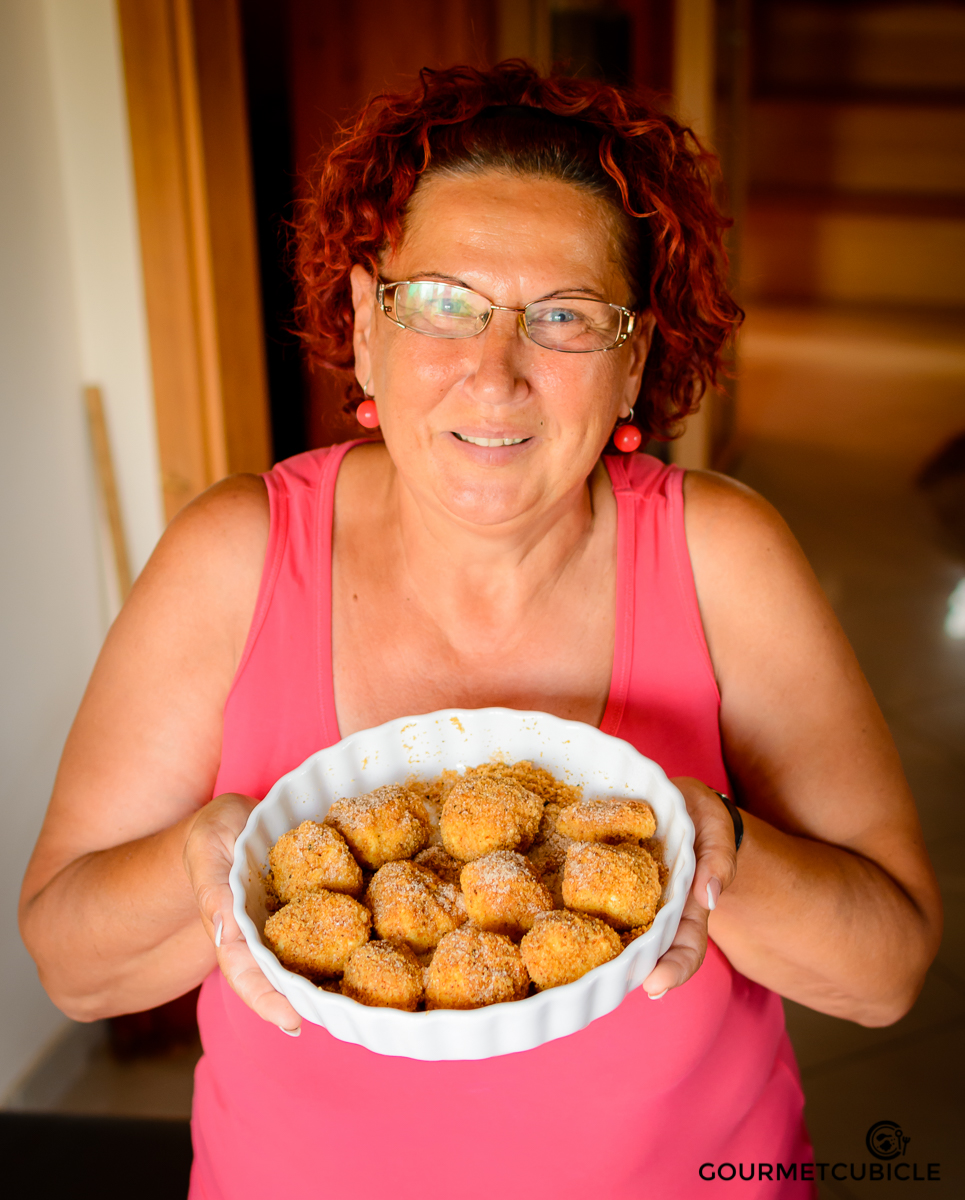Traditional Hungarian Bean Goulash (Babgulyás)
Happy 2017 beautiful people! I was ready to leave a less-than-stellar 2016 behind and re-focus in 2017. This is going to be my year; I can feel it! I recently went on a vacation to Romania and Hungary. It was great seeing my family, working with my old coworkers, and hanging out with my childhood friends, but overall, it was a trip to forget. I missed one of my flights which lead to having my ticket cancelled and having to buy a new one. I also managed to come down with an awful cold which kept me glued to bed unable to to anything.
As soon as I got back to Austin though, everything has started falling into place in terms of health, career, and side projects. I’ve also launched my newest passion project, a monthly pop-up dinner called Cameromania. My new endeavors are leaving me energized, fulfilled, and excited about them.
The idea for Cameromania was born from my friend Rudi’s New Year’s party. Rudi and I have known each other for quite some time. We met at work while I was living in Hungary, and shortly after I moved to the United States, he invited me to his home for New Year. Rudi and his mom prepared some traditional Cameroonian dishes that I found extremely flavorful, exotic, and delicious. In some ways Cameroonian cuisine remind me of Eastern Europe: lots of hearty meat based dishes seasoned with fragrant spices.
You may ask yourself what other connection is there between Cameroon and Romania or Hungary? Well, the first connection is our friendship. The dishes we make at our dinners are a reflection of the strong bond that formed between us. Also, the similar way we think about food—the joy of sharing homemade dishes with friends and family– is a commonality. When I asked Rudi what was the place that felt closest to his home, Cameroon, he told me it was Hungary. He said that he’s been to many places around the world but that the people, the food, the passion, and the love in Hungary felt most like home to him.
Gulyas —or goulash as it’s called outside of Hungary— is one of Rudi’s favorite Hungarian dishes. It’s also Hungary’s most celebrated dish. In the past, I posted my Traditional Hungarian goulash recipe on here, but there are so many variations of this delicious Hungarian staple dish, I’d have to write book to include them all. Bean goulash, or babgulyas as we call it in Hungary, is very similar to traditional goulash. In addition to beans, we also add smoked hock or some smoked sausage to the soup. It complements the beans so well! It’s a hearty and flavorful dish that is best shared with your loved ones!
Enjoy!
TRADITIONAL HUNGARIAN BEAN GOULASH (BABGULYÁS)
Serves 10-12
Prep time: 15 minutes
Cook time: 2.5 hours
Inactive time: 2 hours
Ingredients
1 lb. dry kidney beans (cranberry or pinto beans)
1-2 smoked pork hocks (or country ham bones and skin)
8 cups chicken broth, warmed-up
½ cup canola oil (or duck fat)
1 medium-sized yellow onion, roughly chopped
3-4 cloves garlic, finely chopped
2 Roma tomatoes
2 Anaheim peppers (or Hungarian wax peppers)
1 ½ lbs. beef chuck
2 Tbsp. Hungarian paprika
1 tsp. freshly ground black pepper
1 tsp. ground cumin
1 tsp. dried marjoram
2 dried bay leaves
2 carrots, cut into rounds
2 parsley roots, cut into rounds
1 celery root, cut into half inch cubes
½ bunch fresh parsley leaves
kosher salt, to taste
sour cream
Instructions
In a large bowl, cover the beans with 1-2 inches of cold water. Let them soak overnight.
If the country ham bones or pork hock is too salty, soak them for a couple of hours.
In a sauce pan, bring broth to a boil over high heat. Reduce the heat to low to keep the broth hot.
In a large Dutch oven (12 quarts), heat oil or duck fat over high heat. When shimmering hot, add onions and sauté for 5-6 minutes. Stir often to avoid burning them.
Add garlic, tomatoes, and peppers and cook for another 3 minutes. Stir occasionally.
Add the beef to the mixture. Sprinkle with paprika, ground pepper, cumin, and marjoram. Mix well, until the beef is well coated. Cook for another 5 minutes.
Pour in hot broth, add the pork hock, toss in bay leaves, and bring to a boil. Reduce heat to low and let the soup simmer for 1 hour, stirring occasionally.
Add 2 cups of hot water and toss in the beans. Stir and cook for another half an hour.
Add carrots, parsley roots, celery roots, parsley leaves, and salt. Adjust to medium heat and cook until the root vegetables are tender but firm; about 20-25 minutes.
Remove from heat. Serve in a bowl with a dollop of sour cream on top and fresh bread on the side.






















